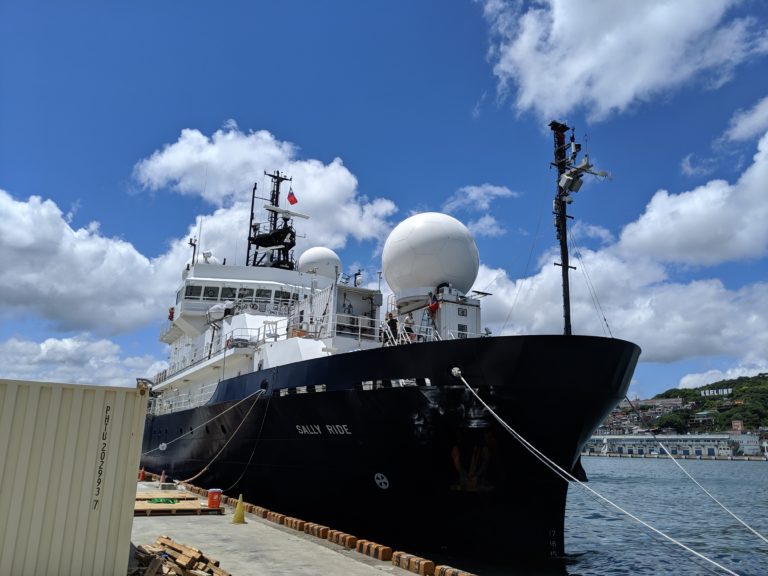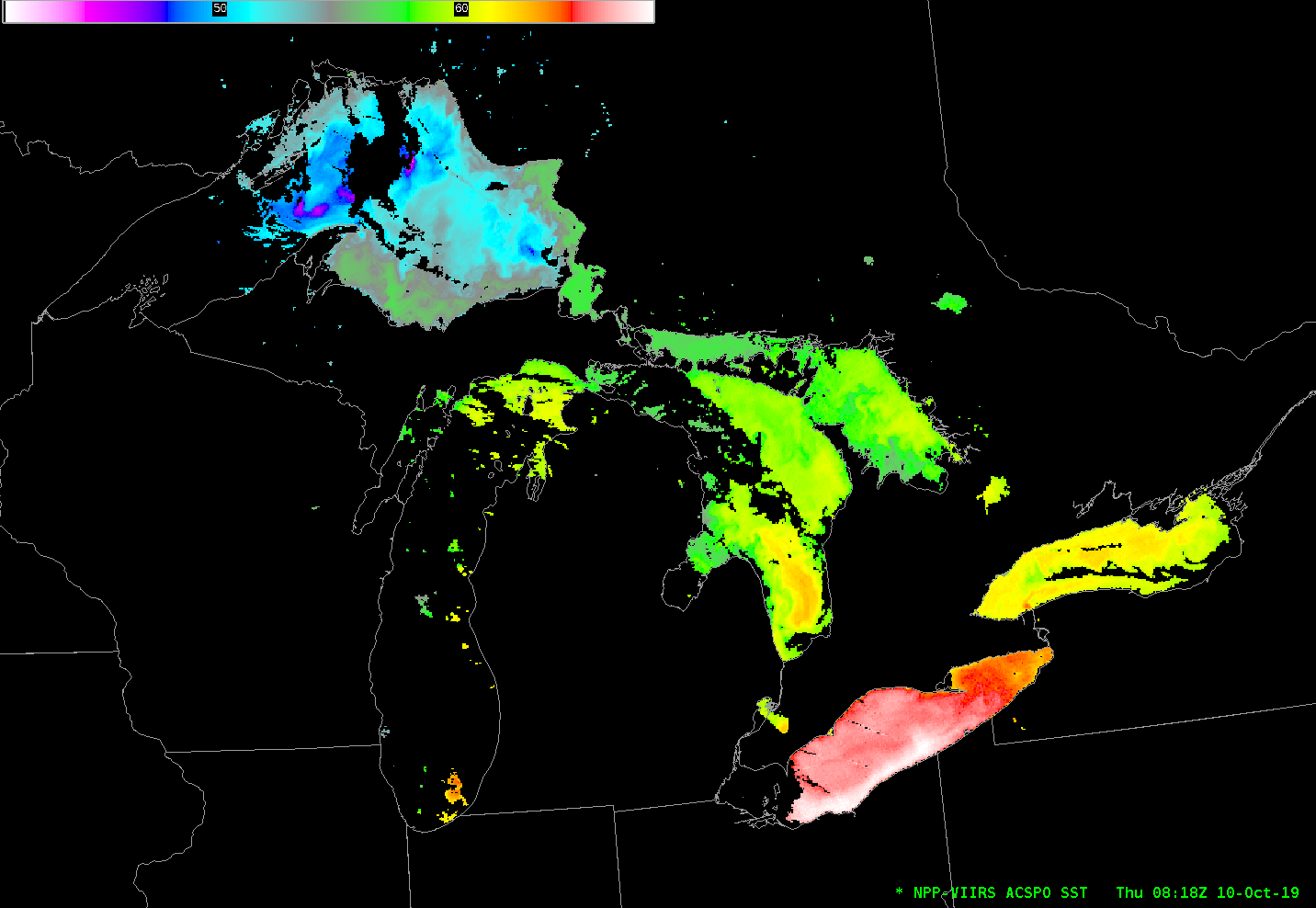
[ Archive ]

 |
CIMSS-NOAA Weekly Report [ Archive ] |
 |
ASPB AND CIMSS WEEKLY HIGHLIGHTS FOR THE WEEK ENDING OCTOBER 11, 2019
IN THE PRESS:
SSEC and CIMSS Scientists in the News: Scientists at the University of Wisconsin-Madison (UW) Space Science and Engineering Center (SSEC) and the Cooperative Institute for Meteorological Satellite Studies (CIMSS) provide expert commentary, interviews, and imagery to news media and participate in events to promote science. In the news this week: 1) For the second year, SSEC scientist Bob Holz and others participated in The Cloud, Aerosol and Monsoon Processes Philippines Experiment (CAMP2Ex) by providing support for mission planning and three data collection field deployments. SSEC News published this story: https://www.ssec.wisc.edu/news/articles/12269/. 2) CIMSS Satellite Blog contributor Scott Bachmeier published posts on "High Plains lee-side cold frontal gravity wave" (Oct 10), "Super Typhoon Hagibis in the West Pacific Ocean" (Oct. 7, 8), and "Aircraft dissipation trails over southern Wisconsin and northern Illinois" (Oct. 6). Read more at the CIMSS Satellite Blog: http://cimss.ssec.wisc.edu/goes/blog/. (R. Holz, E. Verbeten, SSEC, CIMSS, S. Backmeier, CIMSS, J. Phillips, SSEC, 608-262-8164)
 (Click image to enlarge)
(Click image to enlarge)
Figure: The Sally Ride research vessel embarked on a two month journey over the Philippine Sea as part of CAMP2Ex to collect atmospheric and oceanographic data. Among the crew, SSEC scientists installed and operated instruments to measure atmospheric conditions and aerosols present in the region. Credit: Igor Razenkov.
 (Click image to enlarge)
(Click image to enlarge)
Figure: JMA Himawari-8 “Clean” Infrared Window (10.4 µm) images showed the pinhole eye of Super Typhoon Hagibis as it rapidly intensified to a Category 5 storm by 12 UTC on 07 October 2019. Credit: CIMSS.
ITEMS FOR THE ADMINISTRATOR:
ITEMS FOR THE ASSISTANT ADMINISTRATOR:
GOES-R Series Book Published: The GOES-R Series: A New Generation of Geostationary Environmental Satellites, edited by S. Goodman, J. Daniels, T. Schmit and R. Redmon, was published by Elsevier. M. Smith provided critical editing. There were over 70 contributors to this book. More info: https://www.elsevier.com/books/the-goes-r-series/goodman/978-0-12-814327-8. The ISBN: 9780128143278. (T. Schmit, E/RA2, 608-263-0291 and J. Daniels, STAR).
 (Click image to enlarge)
(Click image to enlarge)
Figure: Sometimes you can judge a book by its cover: The GOES-R Series: A New Generation of Geostationary Environmental Satellites book.
ITEMS FOR THE OFFICE DIRECTOR, STAR:
Routine Processing of ACSPO SSTs using DB data at CIMSS: Advanced Clear Sky Processor for Ocean (ACSPO) Sea Surface Temperatures are now being routinely produced from data downloaded from the SSEC/CIMSS Direct Broadcast (DB) antenna. Data from the Visible Infrared Imaging Radiometer Suite (VIIRS) on Suomi-NPP and NOAA-20 are both used to create this clear-sky product, and data files created can be displayed in AWIPS. Imagery can be created over most of the contiguous United States from the CIMSS DB antenna; some examples are shown on the CIMSS Blog (http://cimss.ssec.wisc.edu/goes/blog/archives/34628). The Data are available to National Weather Service Regional offices so that individual forecast offices can request it over LDM (L. Cronce, K. Strabala, S. Lindstrom, CIMSS, 608 263 4425)
 (Click image to enlarge)
(Click image to enlarge)
Figure: Lake Surface temperatures at 0818 UTC on 10 October 2019
ITEMS FOR THE DIVISION CHIEF, CoRP:
ASPB Participation in the PREFIRE Science Team Meeting: ASPB scientists Yinghui Liu and Jeff Key participated in the PREFIRE (Polar Radiant Energy in the Far-InfraRed Experiment) Science Team Meeting, October 9-10, at the University of Wisconsin-Madison. They presented an overview of the NOAA cryosphere products. With two CubeSats, PREFIRE will document, for the first time, variability in spectral fluxes from 5-45 μm on hourly to seasonal timescales. UW-Madison professor and Cooperative Institute for Meteorological Satellite Studies (CIMSS) Director Tristan L'Ecuyer is the principal investigator of this project. The PREFIRE Science Team plans to use the cryosphere products as ancillary data sets to generate their Level-2 products. (Y. Liu, E/RA2, 608-890-1893, yinghui.liu@noaa.gov)
VISITORS:
NEXT WEEK:
LOOKING AHEAD:
| Archived Weeklies Page | Submit a report item |